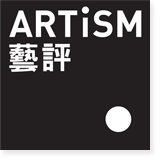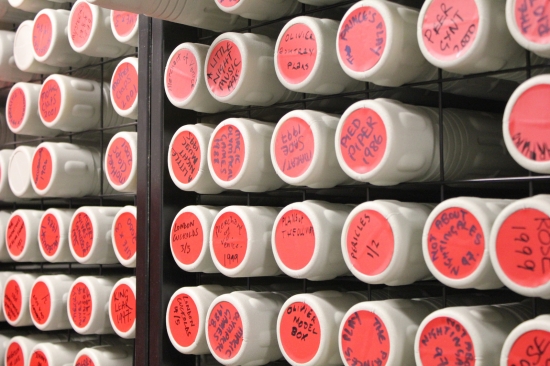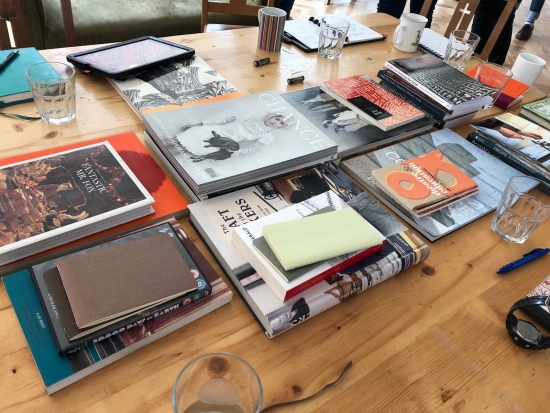At the National Theatre of Great Britain, we make world-class theatre that is entertaining, challenging and inspiring. And we make it for everyone. We stage over 20 productions at our South Bank home each year. Our programme is broad and inclusive, appealing to the widest possible audiences with new plays, musicals, re-imagined classics and work for young audiences.
I head up the Archive team and our aim is to document, preserve and make accessible everything related to the history of the National Theatre and its ongoing activities. This is a pretty broad remit and our collections span as far back as the mid-1800s with the movement to found the National Theatre right up to present day. In this article, I would like to share with you some of the challenges we face and a project that we are working on to make more of the creative process available to our audiences.
But first, I will give an overview of what we have at the National Theatre Archive and who uses our materials. We split our collection into three sections, which helps us with access, cataloguing and budgeting. The first area is the cultural archive, which contains all the material relating to productions including costume bibles, prompt scripts, photographs, programmes, posters, production recordings and press reviews. We do not collect costume as we have a costume and props hire department which is a commercial arm of the theatre. This Cultural section of the Archive is what is accessed most frequently by researchers and where most of the cataloguing is focused. Our online catalogue <insert link http://catalogue.nationaltheatre.org.uk/CalmView/Default.aspx?> lists this whole section as well as hosts our production database, which is up to date to within a week and holds information on each play, its opening, closing and press nights, length of performance and duration of run as well as the all-important cast and creatives. This performance database is the backbone of our work, and we are now relied on by all departments at the National Theatre for our historical data on performances, exhibitions, readings and events at the National Theatre.
The Business Archive holds all the administrative and legal documentation of the National Theatre including board papers, strategic documents and architectural plans.
The third section is that of the external collections. We have had several collections donated to us and hold the Shakespeare Memorial National Theatre Collection charting the movement to found the National Theatre, as well as the Jocelyn Herbert design archive, Catherine Fleming collection, who was the National Theatre’s first voice coach, and two collections relating to the building of the National Theatre on the South Bank.
NT Department & Place-5-Archive
The splitting of the collections into these three sections has helped us to consider future strategies for the Archive. We have focused cataloguing and digitisation on the Cultural Archive as it is the most heavily used by our researchers. The Archive has a mixed pool of researchers from the general public who may want to catch up on productions to theatre practitioners to academics who could be studying playwrights, directors, genres, architecture or any other of a plethora of subjects I have seen come through our doors. We are averaging around 4,200 visitors per year. We also host around 100 school and university visits per year from age 10 to 18 as well as groups of university students, both undergraduate and postgraduate levels studying a variety of topics. These audiences drive our strategies in the Archive, and our work is focused on improving our service for them as well as attracting newer audiences.
That is a quick overview of the Archive and what we can offer in the research room. We also work extensively with the Learning department on events and exhibitions, with Marketing on social media content, with Press and Publications on sourcing images and making sure that what we send out to the world is a true narrative on the history of the National Theatre.
This split in the Archive has also allowed us to see where we may have gaps in the collection. We do not have much documentation of theatre making processes, so we are actively working to close this gap and ensure that we are documenting the ever-changing processes in use at the National Theatre. As a performing arts archivist, it is my role to capture as much as remains from a performance but, in my role at the moment, I do not wish to affect the process by which a production is put together with a view to having better or different documentation. At the National Theatre, the production always comes first.
Operating within this limited framework, the Archive team is seeking to fill the current gaps in the collections. We are continuing with an oral history project, which focuses on capturing the experience and memories of those who have been related to the National Theatre for a long period of time. We are focussing on staff members rather than actors or directors. Their memories of working at the National Theatre, particularly during periods of change such as moving to our Southbank building or the changing over of artistic directors, give a much needed and valuable insight into the workings of the National Theatre. These interviews are of value to researchers of particular backstage crafts, social historians and internal staff curating exhibitions and social media content.
As for documenting theatre making processes, the New Work department and Archive have recently been working on a collaborative project. New Work is the engine room for the National Theatre’s creative output, developing work and artists for our stages and beyond. We are in conversation with a designer, who is fascinated by the idea of documenting the invisible threads that are woven to create a production. She is interested in the relationships between craftspeople, designers and those on stage. Oftentimes an actor has no idea who made his trousers or her cardigan, but there is in fact a complicated web of relationships behind the scenes, many times covering disparate parts of the country, that all work to create a coherent whole on the night. How do you document these relationships and what would this documentation look like? An exhibition, a series of photographs, an installation?
Workshop
Earlier this year we ran a two-day workshop at the National Theatre Studio, which brought together designers, directors, scenic artists, producers, a curator, an archivist and a theatrical knitter. The aim was to start a conversation about the importance of tracing the hidden relationships that develop in the process of putting on a show. We talked a lot about who the audience for this work would be and how we could demonstrate this very ephemeral aspect of the creative process. This concept is going to develop over the next year or so with more workshops and on-site visits to craftspeople to hone down how we want to display these hidden relationships.
It has been really interesting to work with practitioners to tackle the challenges of documenting a particular aspect of the creative process. The way that practitioners approach their work and that of others is wholly different from how an archivist does, and it is fascinating to try to find where they can overlap. The rigid academic and theoretical structures of archiving do not sit comfortably with the creative process, so it will be an interesting challenge to find some common ground where we can start to build a platform for capturing these processes to preserve them for audiences in the years to come.
Through this work and my involvement with the National Theatre, it seems to me that what we really need is a lively debate and discussion involving the people creating that content, the people looking after the content and the people wanting to access the content. What I find challenging as a performing arts archivist is encouraging practitioners to document their process in a way that will be accessible in the future. Some are incredibly keen to engage with the Archive and use their work in education and to ensure their own legacy. Others, though, just do not see the value. It is only through engaging practitioners that we can have a fully informed discussion and start to tackle the big issues around documentation, and unlock the huge potential for future research and enjoyment of these works.
作者簡介:Head of Archive, National Theatre
照片由作者提供






